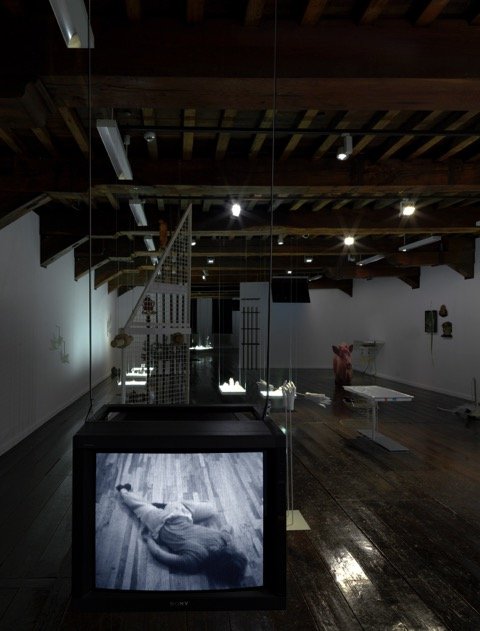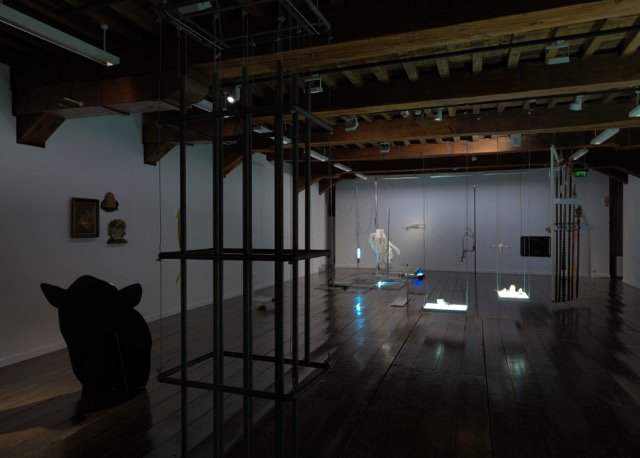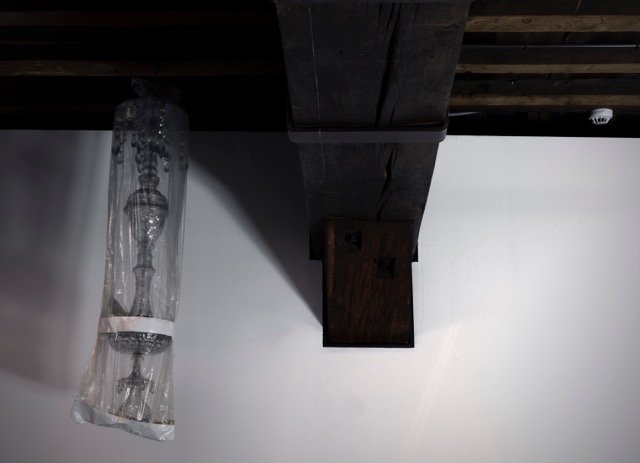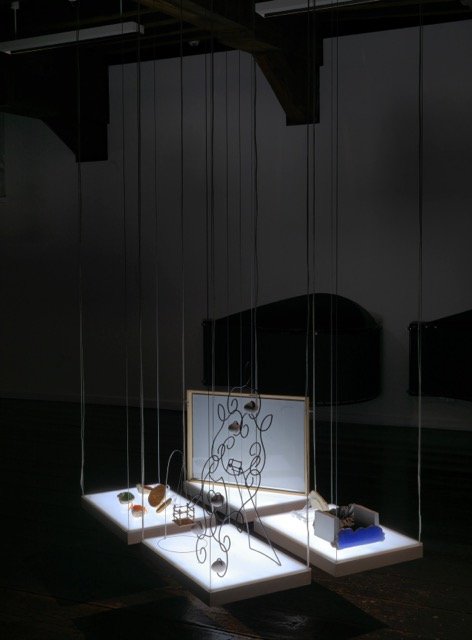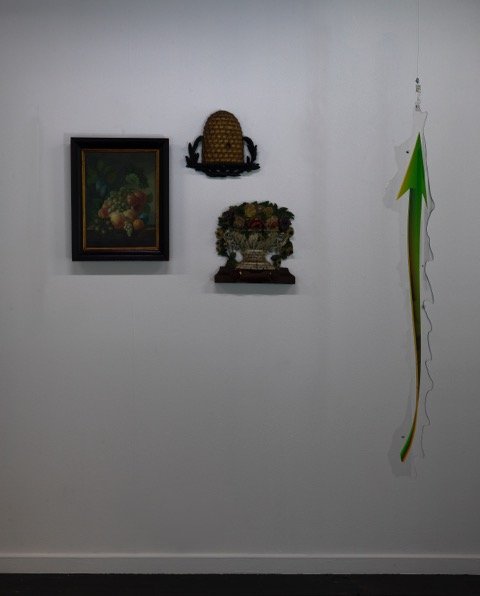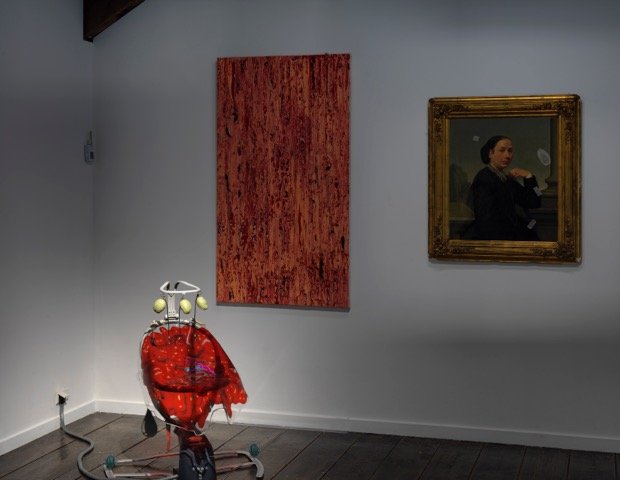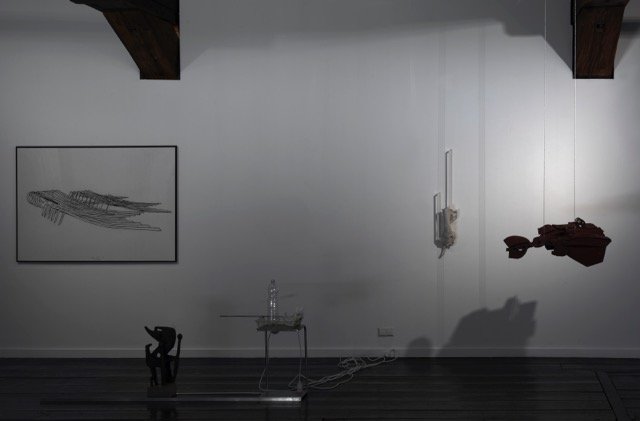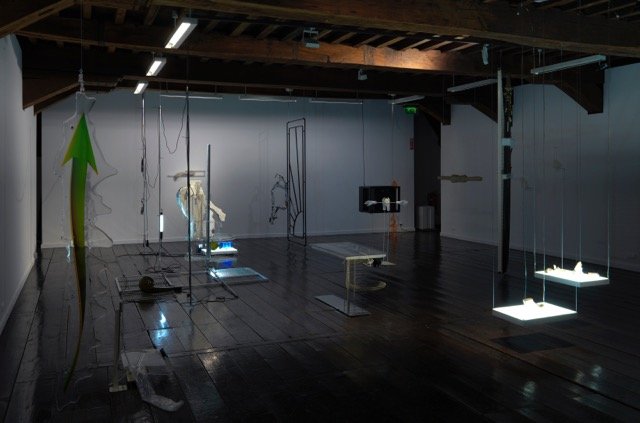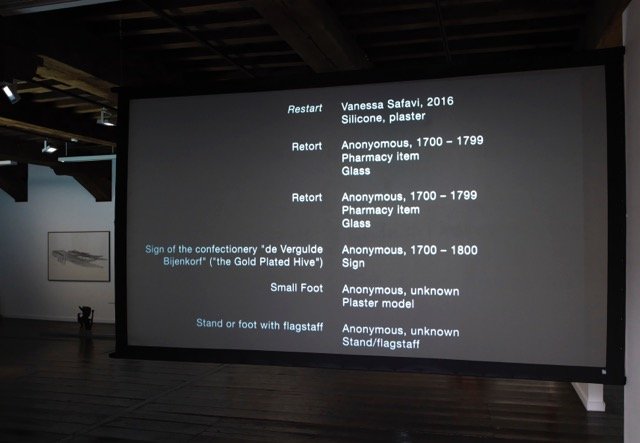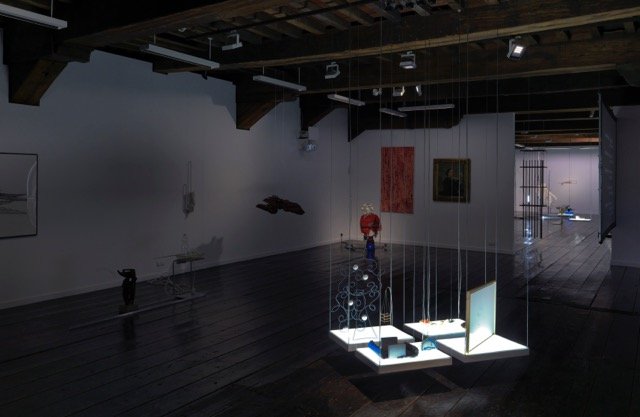Circulation – Mise en Séance is the second exhibition in the Inflected Objects series and it runs at De Hallen Haarlem in the Netherlands from January 15 to May 16, 2016. The series is organised by Melanie Bühler. It looks into how artworks are effected by digital capabilities and social media platforms both in terms of their circulation and in terms of the artist’s attitude and understanding and expectation of spectatorship before the work is made.
Inflected Objects also looks to treat the digital as something now that is hard to locate and pin down. The digital runs “silently in the background”, says the introduction of the Inflected Objects website, designed by Nora Turato, David Kulen and Gui Machiavelli to house the series and its digital documentation. Bühler talks about it as having a 3D environment.
I click on the words “Circulation – Mise en Séance”, which is one phrase in among several that run down the page and move slightly as though waving in the wind. The introduction to the show is given on a black background with white text in a font that in places is not at all aligned and it causes a blurring of vision when combined with the floating titles behind the black rectangle. Of course! It’s because it is in a 3D environment, so I continue to read with my hand clasped as fake binoculars, eyes trying to grasps the words.
“Art is part of the economy of hyper-attention”, the uncertain words say. It describes what we are used to seeing and states the phrase “pics or it didn’t happen” in relation to the fact that for many, a show’s installation photos are more important than the exhibition itself. I start to wonder what the exhibition at the core of this website was. The next blackboard reveals that Circulation – Mise en Séance is an exhibition about “things that didn’t happen” because their pictures weren’t taken, artworks that hardly saw the light of day, the light of electric circulation, or the stage lights before a digital camera-audience. It is about objects that were put away. They are not dead, but they are not fully alive.
Artists Martijn Hendriks, Katja Novitskova, Vanessa Safavi and Dan Walwin, all of whom have practices intertwined with digital production and the way things run in the digital economy were each asked to respond to one of these “things that didn’t happen” in the museum’s archives. Like candle light was once thought to resurrect old artworks by (possibly, imaginably) illuminating the mechanisms of chiaroscuro, each artist in this show conducted an inquiry into an object. The font for this part of the introduction, now in its eighth page, almost shakes when you try to squint at it to make it 3D and this somehow matches the conversation on ghosts, animation, seance and presence that the exhibition is staging in a digital pre-text.
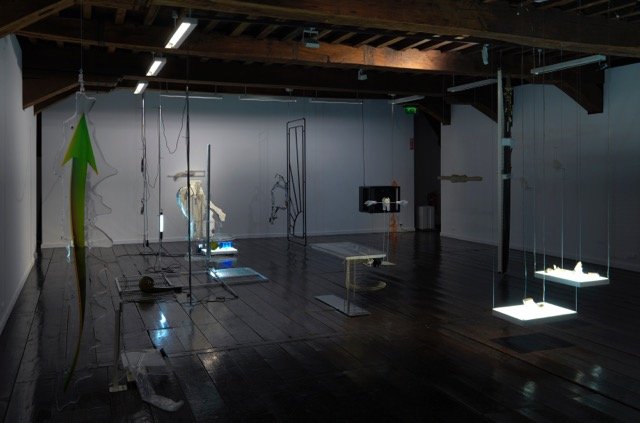
Circulation – Mise en Séance is a play on the words mise en scène, which means ‘stage setting’ or the part where actors and scenery are on a stage for or before a theatrical production. There needs to be no actual theatre for mise en scène to exist. Interestingly, the Inflected Objects website hosts an ‘installation view’ page that does not exactly exacerbate this feeling. As in: It does not show image-after-image, as we might imagine it set like a stage on an Instagram feed, or a Facebook photo album.
A number of fragments that are actually small images, presumably of the resurrection collaborations and the show, are embedded in a space, which, when you navigate it with your cursor feels like an invisible whirlpool, or the inside of a beehive in the middle of a webpage. The images are like car windscreens, curved, and more like fragments or fractured objects than images. ‘Fractured’ is a word Vanessa Safavi uses in her essay ‘Circulation’, which is also on the site and deals with conservation, getting to the cold soul of an object and reading between the words and the lines. All the parts of the theatre are in this digital space and the ‘pics’ of “pics or it didn’t happen” are really held up and treated strangely, which transforms our understanding of them as being literally the kind of digital matter that is silently spinning behind all the usual exhibition photos.
In the spirit of the show then, there will be no words about the images themselves.**
Exhibition photos, top right.
